
In Old Russia, needlework was practiced in every home: from the tsar’s chambers to peasant huts. Embroidery was used to decorate the most ordinary everyday objects, but ecclesiastical embroidery was special. Works of ecclesiastical embroidery depicted saints and, so, were usually donated to churches.
Embroidery appeared in Old Russia even before the adoption of Christianity. On the oldest works of embroidery, you can find pagan images such as the tree of life, the mother goddess or symbols of the sun. But, the craft really came into its own after the Christianization of Russia, thanks to Byzantine influence.
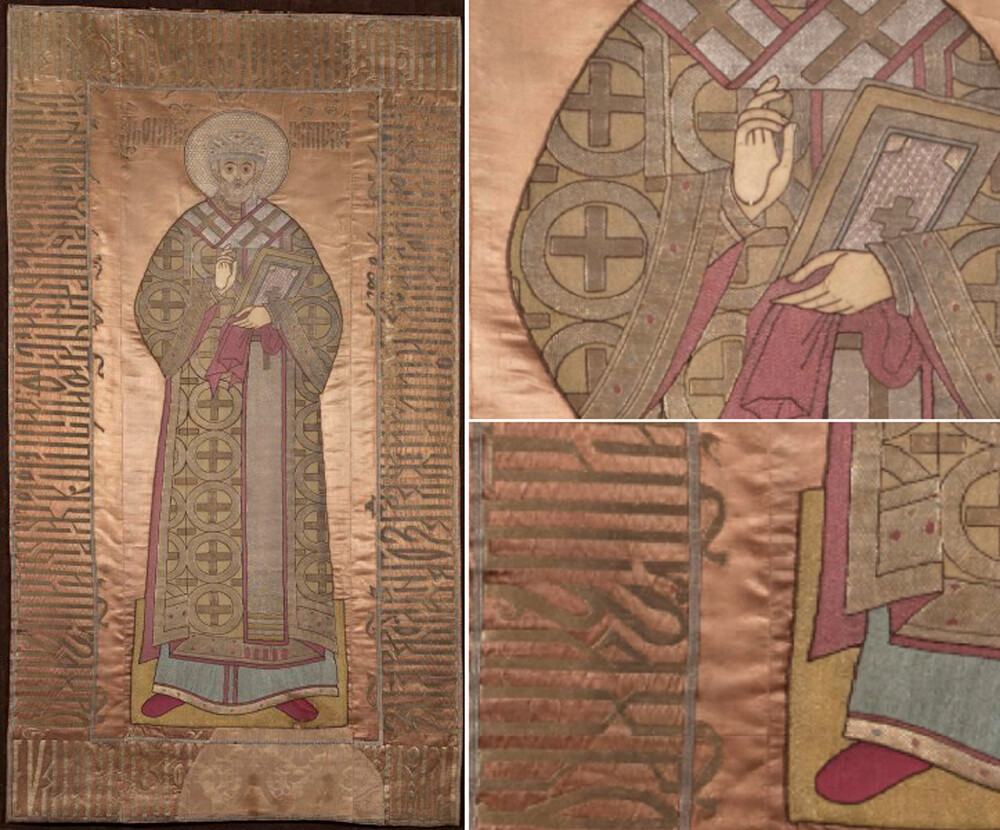
Irina Godunova's workshop, 1592.
Russian MuseumGradually, the pagan elements in embroidery were transformed into the ornamentation around images of the saints. In addition to the saints, stories from the Bible were also embroidered, so examples of ecclesiastical embroidery could often be found in churches on priestly vestments, tomb covers and on the altar table (the table in the middle of the sanctuary). They were also used for divine services and there even exist rare examples of embroidered icons.
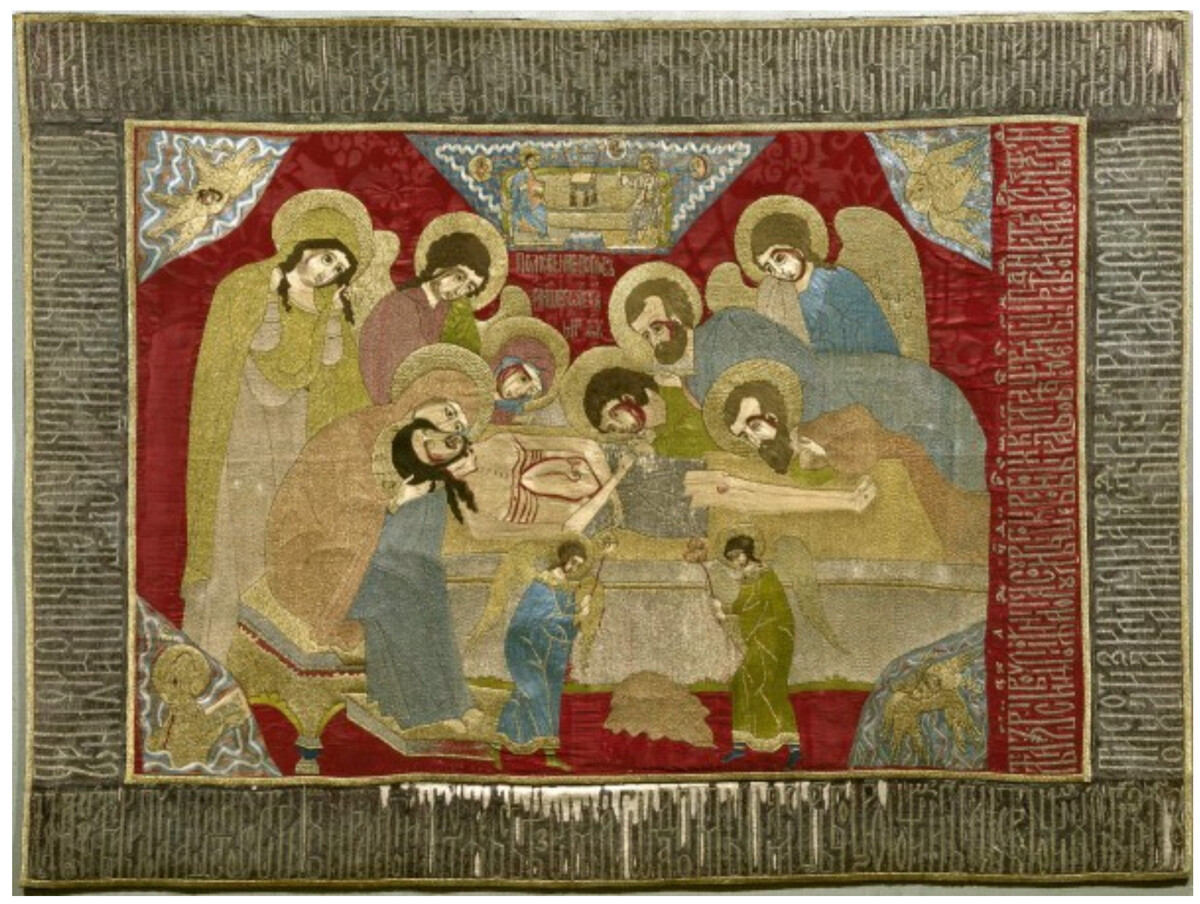
Workshop of Eupraxia, wife on Nikita Stroganoff, 1592.
Russian Museum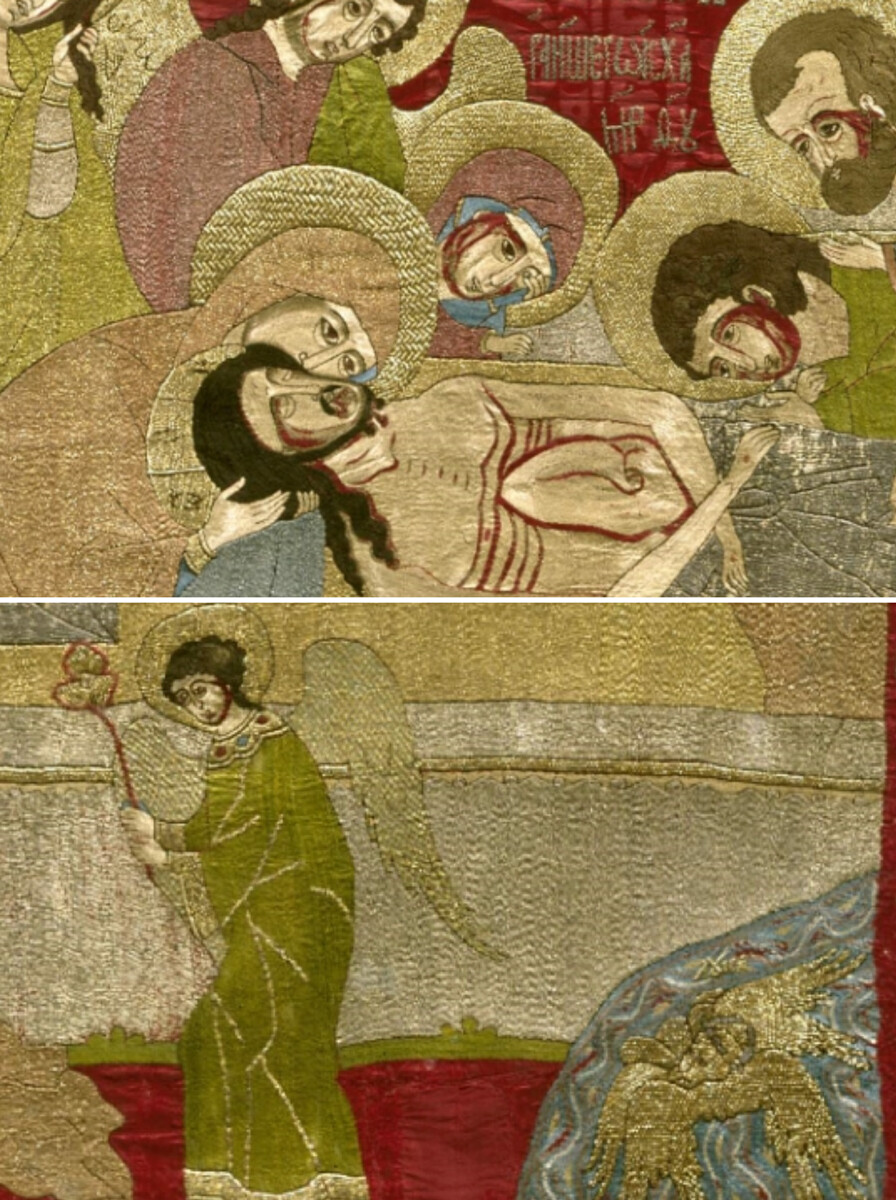
Workshop of Eupraxia, wife on Nikita Stroganoff, 1592.
Russian Museum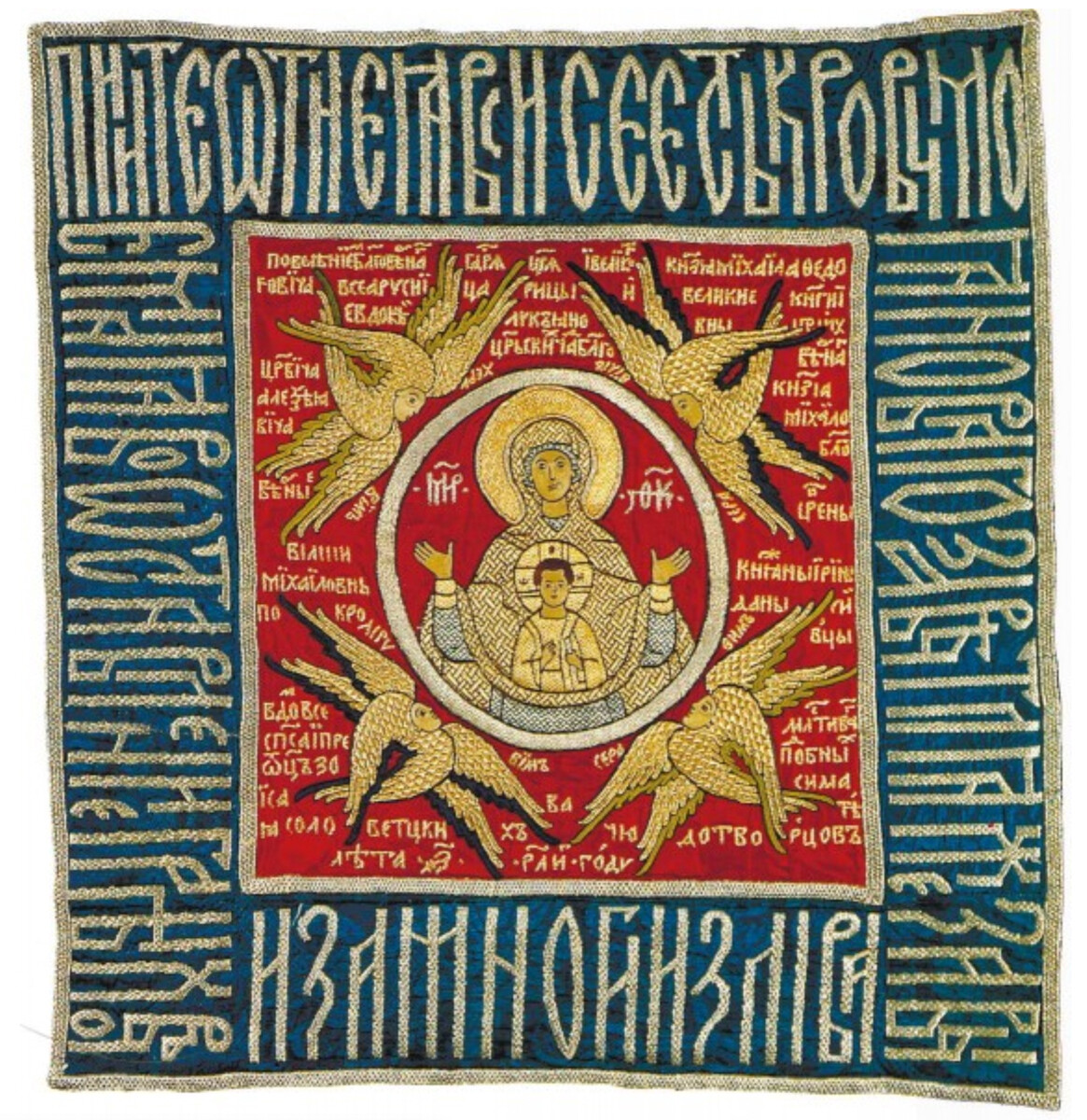
Workshop of Eudoxia Streshneva, 1630.
Russian MuseumAccording to ‘Domostroy’, a famous work of 16th-century Russian literature setting out household rules, a good wife should be adept at housekeeping and handicrafts. The rule applied to all sections of the population, so girls from both low-born and noble families were taught embroidery. But, only girls from wealthy families undertook ecclesiastical embroidery - silk, gold and silver thread, as well as the other materials used in such embroidery were very expensive.
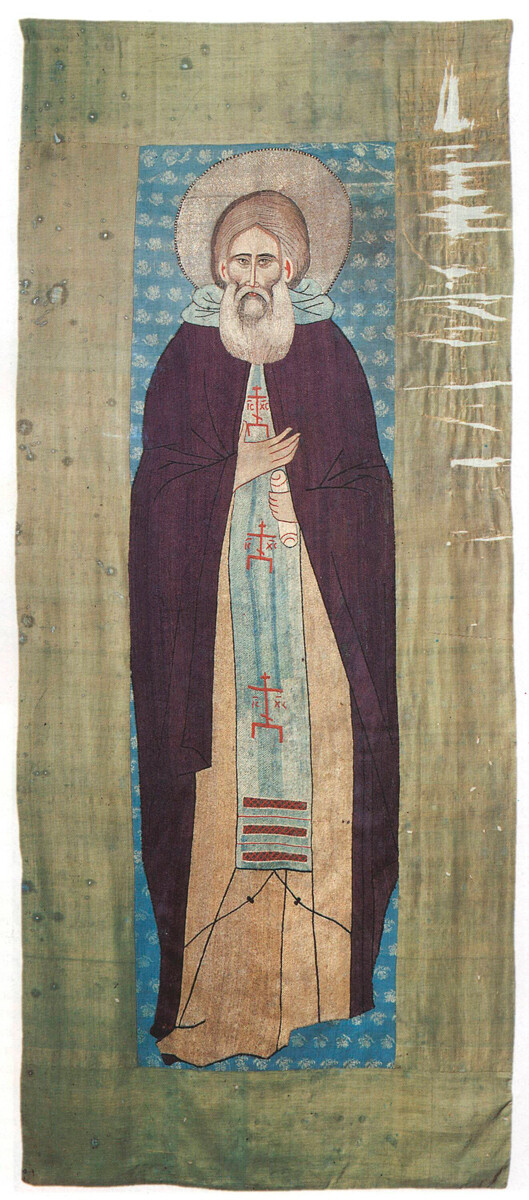
In addition, ecclesiastical embroidery is a complicated process. In wealthy houses, there was a special room in which both the mistress of the house and her skilled craftswomen engaged in handicrafts. Up to 100 girls could be working in the tsarina’s workshop, but ecclesiastical embroidery also required iconographers, specialists in ornamentation and calligraphers. These jobs were usually done by men. They would draw saints, ornaments and inscriptions on paper, while skilled needlewomen would then place the drawings on the foundation fabrics and prick out the outlines of the images, thus transferring the design for the future embroidered work.
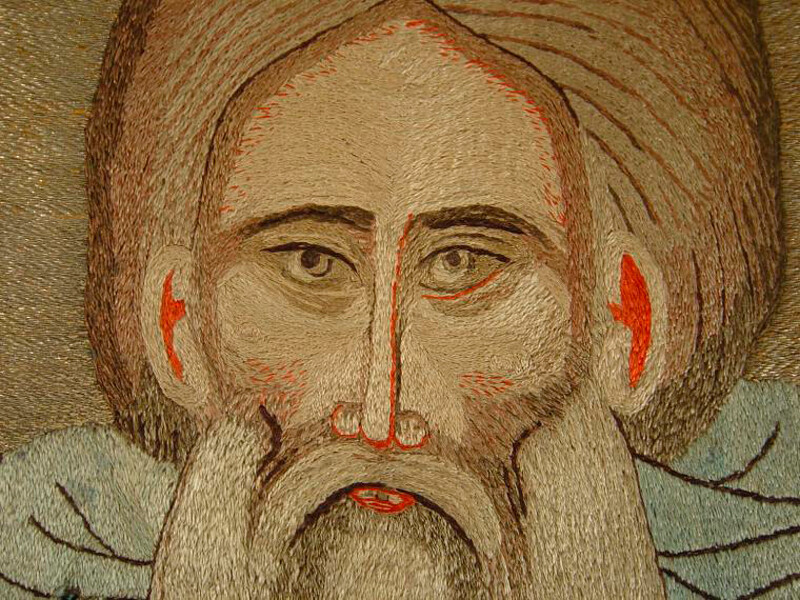
Sometimes the drawing was made on the fabric itself and the needleworkers overstitched it with white thread and then set about embroidering the design.

This second name of ecclesiastical embroidery dates from the 15th century, when the foundation fabrics began to be embroidered with different-colored silks. The silk was imported from China, Persia, Turkey and sometimes Italy or Spain. Frequently ecclesiastical embroidery would additionally involve decoration with precious stones and pearls.
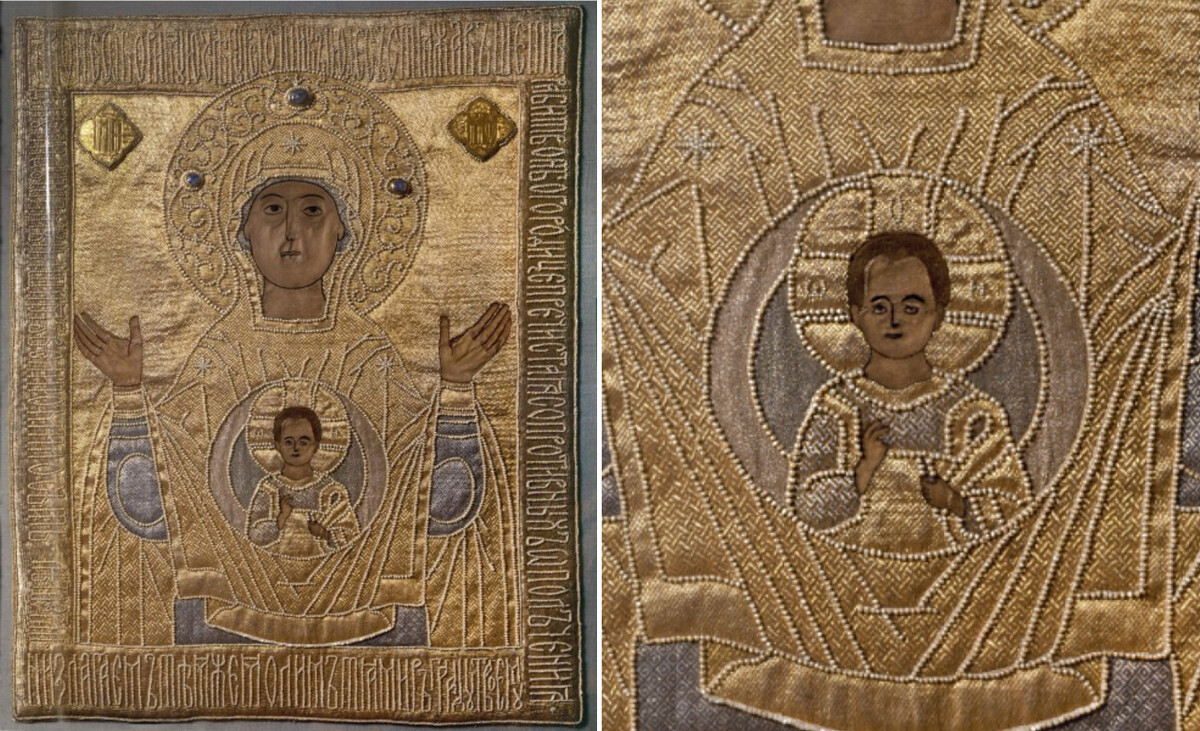
Workshop of Eudoxia Streshneva, 1630.
Russian Museum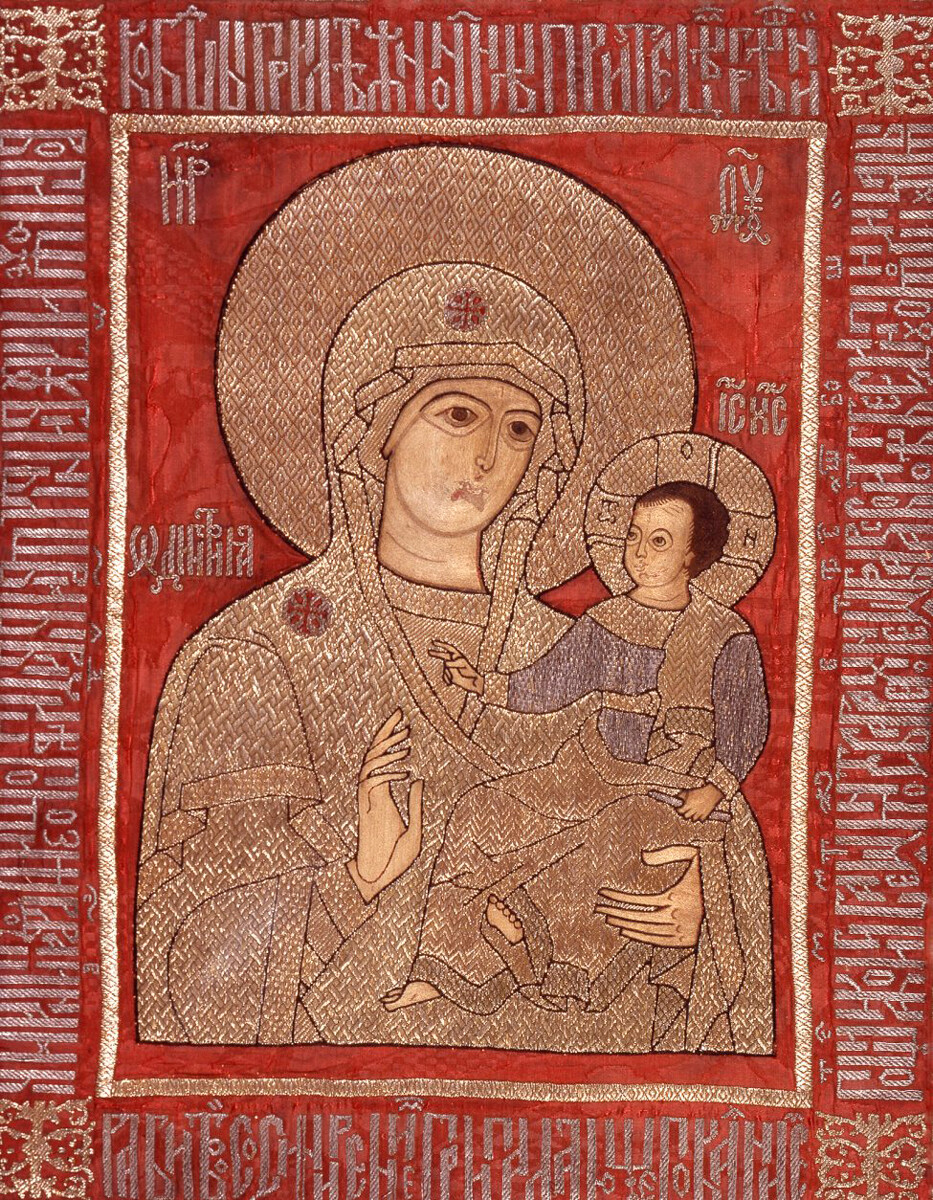
Hodegetria, 1620-1630.
Art gallery of PermSome particularly complex works could take several years to embroider, with a number of skilled needlewomen involved in a single work, each specializing in a particular task. For instance, some of the women worked on embellishing the fabric with pearls. Good embroiderers spent a long time working in the craft room - 35-50 years.
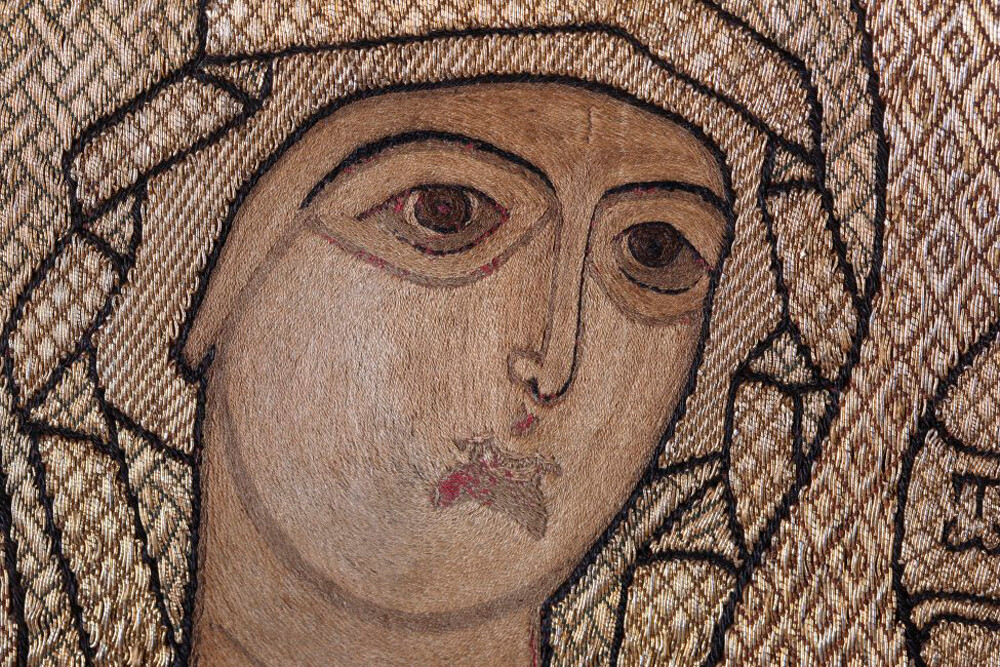
Hodegetria, 1620-1630.
Art gallery of Perm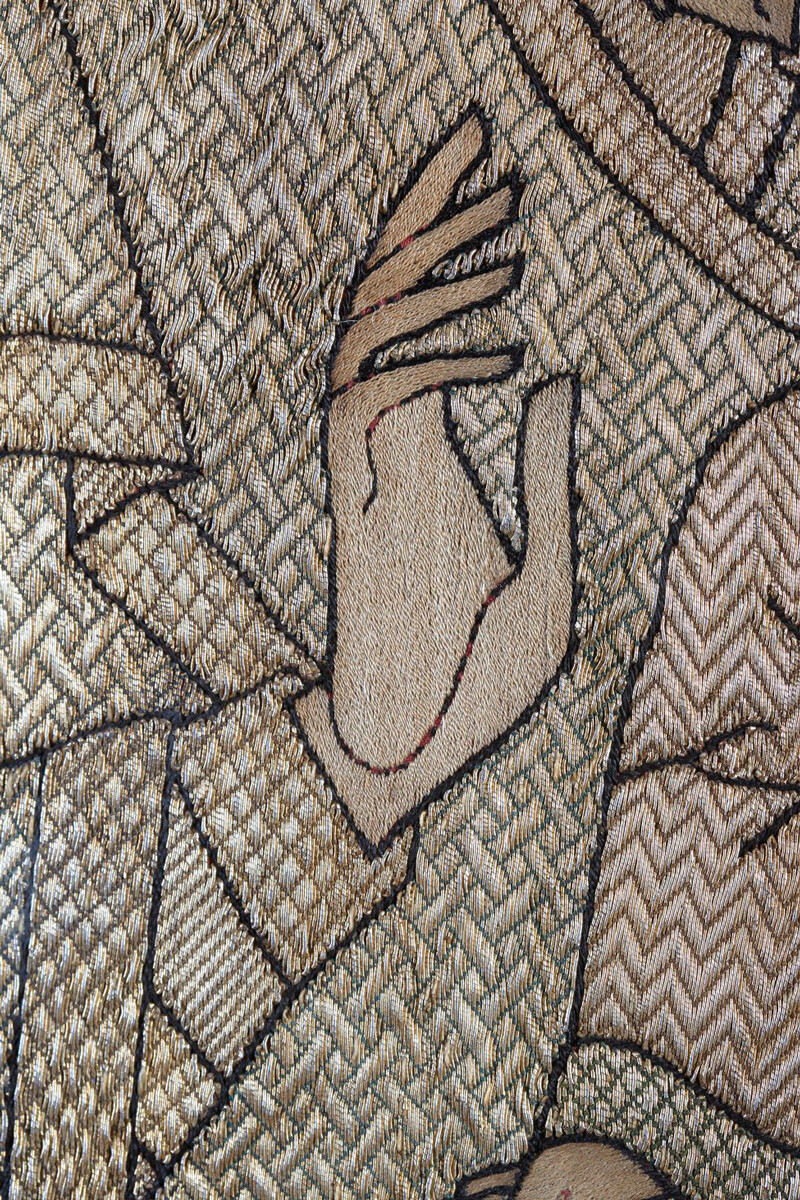
Hodegetria, 1620-1630.
Art gallery of PermMany of the works have failed to survive to our day. But contemporary ecclesiastical embroidery workshops continue the old tradition. For instance, the craft is carried on in a workshop at the Trinity Lavra of St. Sergius in the town of Sergiev Posad.
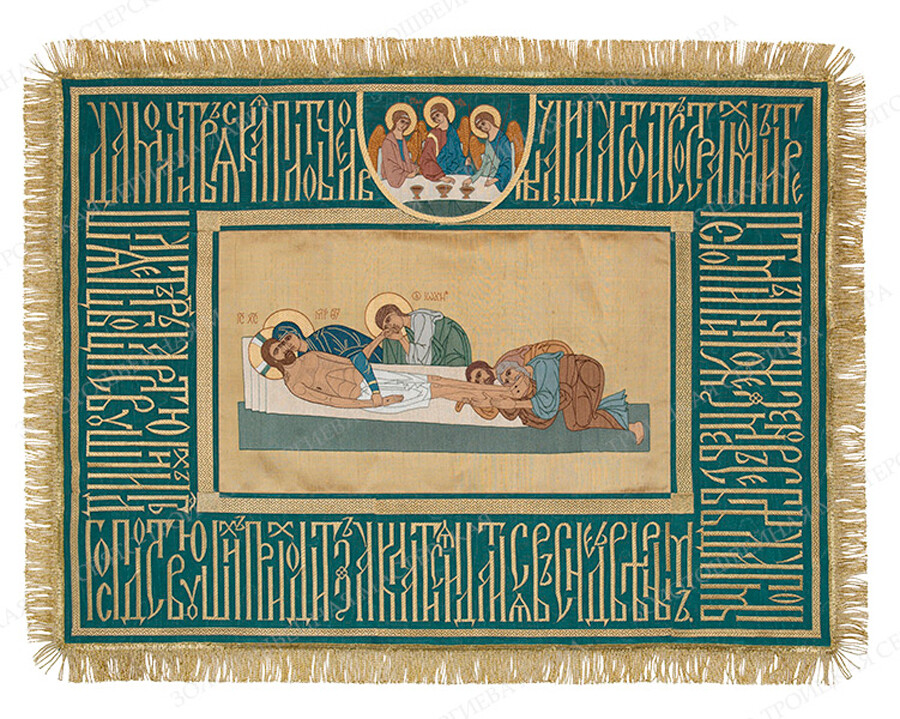
The Entombment of Christ.
Gold embroidery workshop/The Holy Trinity-St. Sergius Lavra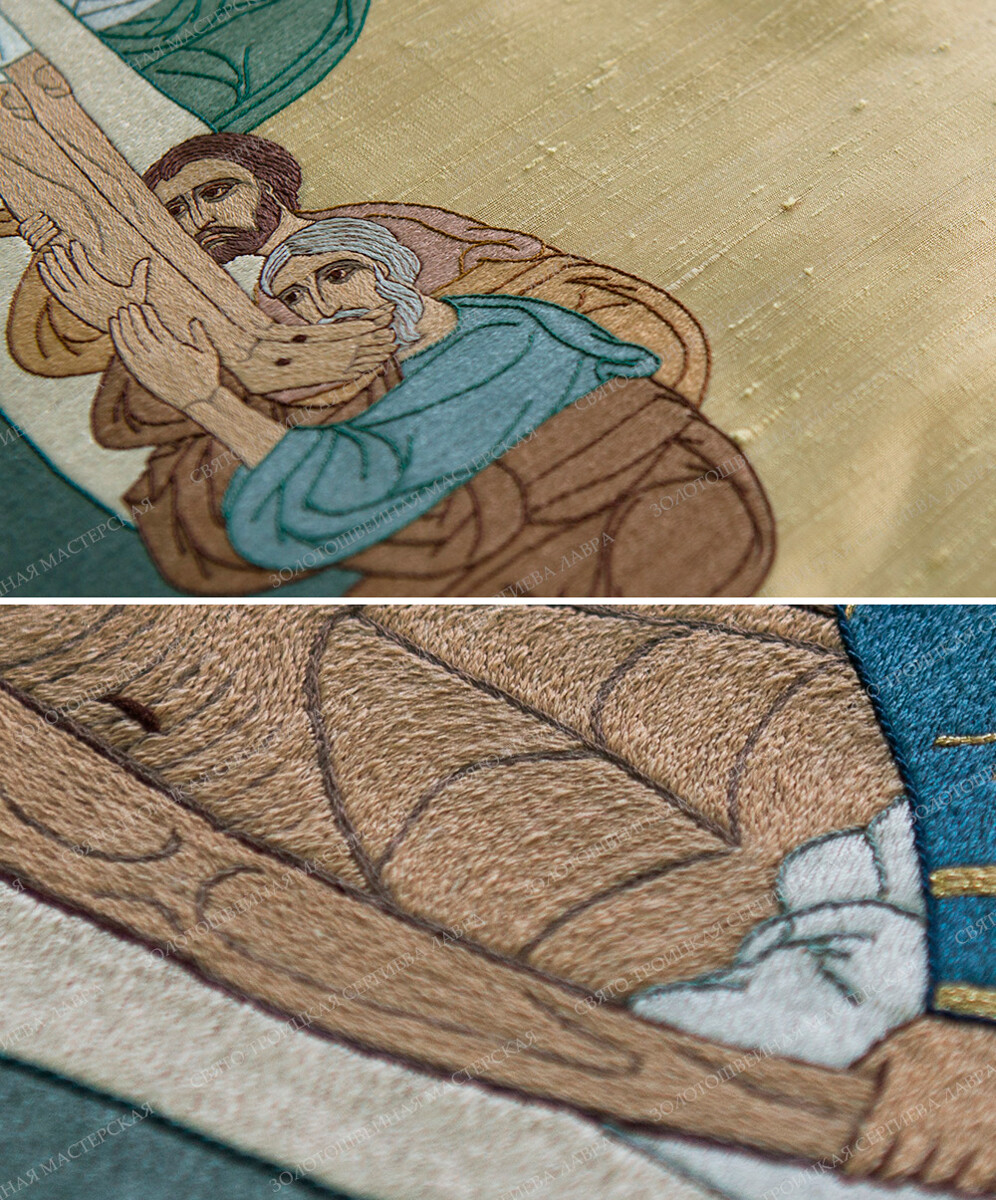
The Entombment of Christ.
Gold embroidery workshop/The Holy Trinity-St. Sergius LavraThere are also independent workshops and needlewomen working outside ecclesiastical institutions. You can even find a school of embroidery, where anyone can come to master the ancient technique.

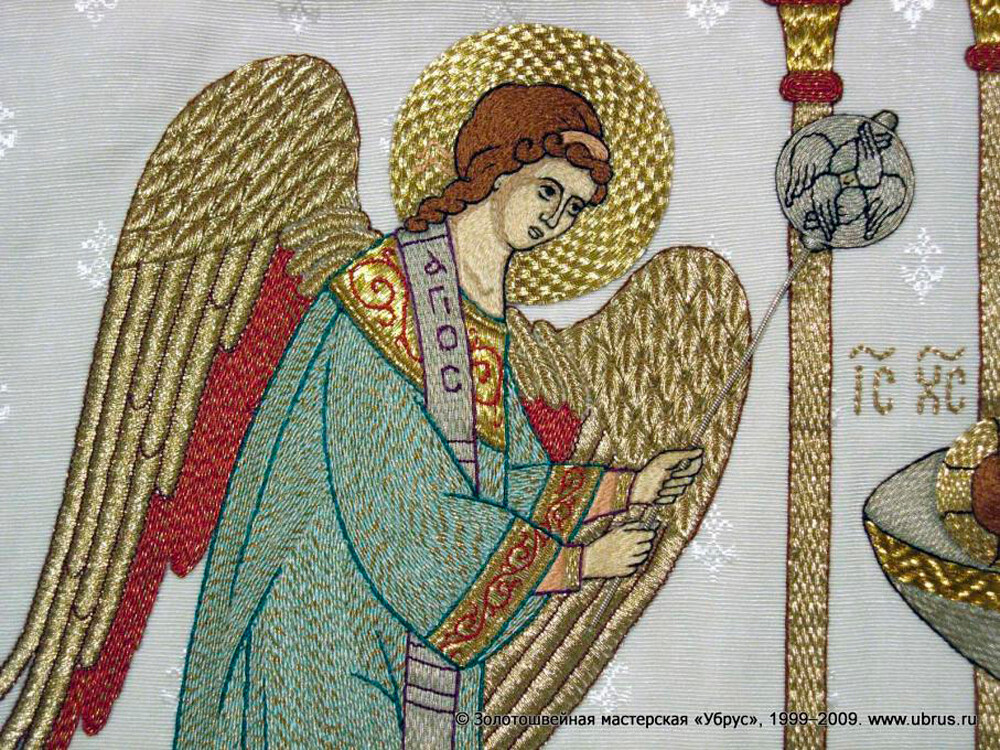
Dear readers,
Our website and social media accounts are under threat of being restricted or banned, due to the current circumstances. So, to keep up with our latest content, simply do the following:
If using any of Russia Beyond's content, partly or in full, always provide an active hyperlink to the original material.
Subscribe
to our newsletter!
Get the week's best stories straight to your inbox